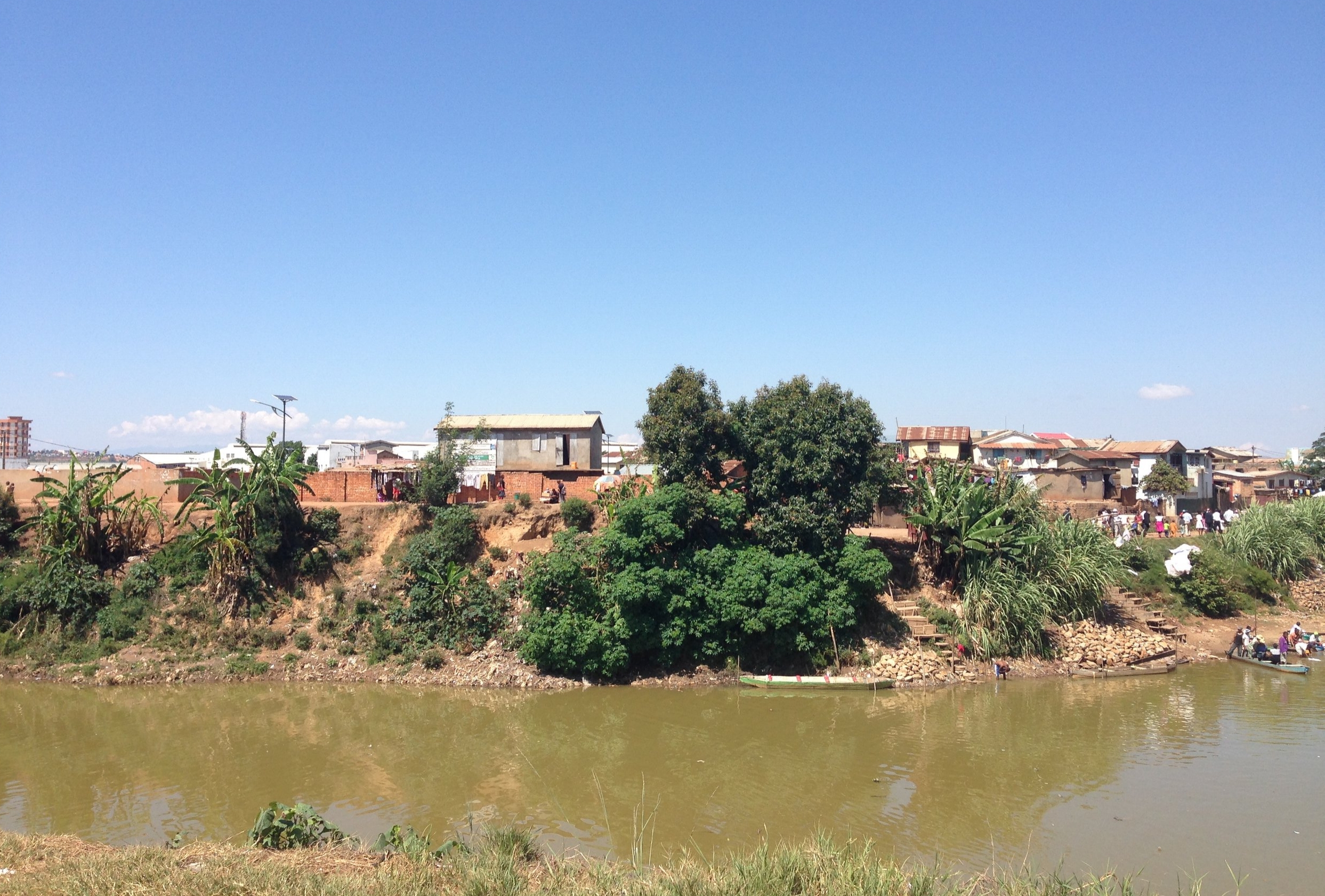We had a little party at our apartment for students from Ambatofinandrahana, our Peace Corps site (2007-2009), who are living in Antananarivo. It was great to see them and catch up. We had seen some of them earlier, so we were already brought up speed on much of the news in Ambatofinandrahana, but we learned some more, which is always good. And it was good to see my former students doing well. Many have either completed their undergraduate degrees or even Master’s degrees. I am proud of them and happy for them. They are doing well and making lives for themselves. The fact of the matter is that there is not much work in Ambatofinandrahana. There was an Italian company there that mined marble—‘Ambatofinandrahana’ literally means the place where stone is cut—but they pulled out after the coup d’etat in 2009. Now there are some foreigners buying gems, but there are not many jobs being produced. So, it’s good that my former students are in the capital, working and studying.
It was nearly 10 years ago that I started teaching them—summer of 2007. I can’t help but be happy when I think about that time in the classroom. Yes, there were struggles I faced as a teacher, but it’s where I really became a teacher. Before that, my teaching experience was limited to being a teaching assistant to large-lecture classes at the University of Florida. In the Peace Corps I was truly on my own in front of 50 or so students teaching them English in a mixture of English and Malagasy. After that experience, I figured there wasn’t much I couldn't do teaching-wise. It wasn’t just the time in the classroom, though, that made me a teacher. My wife, Emily, and I would bounce ideas off of each other about teaching constantly in those two years, and we even team-taught adult classes in town. I learned a great deal from her. To be honest, no one has taught me more about teaching than she has. To this day, if I am in need of an idea, she is always there to help. And I haven't learned from just our conversations. I also learned a great deal from watching her teach during the Peace Corps. She is a natural educator: always prepared, always there with fresh ideas, always in command of the class and the content, always doing what is best for the students.
So I’ve learned a thing or two about teaching in the 14 years I’ve been at it. And I am now back at it. I just started up again this Monday with some third-year college students in a new Philosophy of Language class I am teaching. (I will start with my Master's students soon.) I have to say that my favorite thing about teaching is being in front of students and working with them. It seems like a cliché, but one of the best feelings as a teacher is having a real conversation with students who are interested in something that interests you. That is the sweetest part of the job for me. The actual teaching rarely ever feels like work. The grading feels like work. The lesson preparation sometimes feels like work, but there are moments for me in teaching when a big philosophical idea is truly considered, explored from different angles, and really engaged with--moments when the truth is fully sought. Those moments do not feel like work. Those moments feel like the opposite of work. They are moments in which I can’t hold back my smile for the joy. They don’t happen everyday, but when they do you savor them. They feed you. They lift you. They power you on.
I have realized that this is what I do. I teach. I pursue knowledge and I share it. That’s a large part of what makes me who I am. I embrace that and it hones my focus, my being, my action, and my work.
10 years is no mere moment. As we age the possible paths for our lives, once seemingly infinite, start to drop off the map. What once seemed like a life of many possible journeys narrows to but a few. How to look at this fact? What to think about those paths that disappeared off the map—those things that never will be? I used to feel like my life became somehow diminished as paths dropped off. But I don’t now.
Here's how I see it. You try to spend as much time as you can doing the things that make you who you are. Maybe you are on a path now doing those things. If not, find an offshoot of the path you are where you can do what makes you who you are. And don’t look back on those things that never will be. Those things that are nothing. Those are paths for no one now. Instead find those things that make you who you are. Do those things as much as you can as well as you can with as much of yourself as you can. Do that and sharpen yourself everyday.












